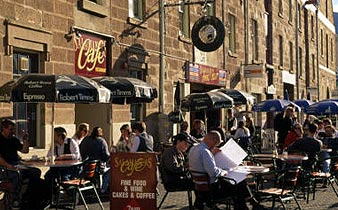Hobart Typesetting Service for Japanese

If you have an InDesign file that requires translation from English to Japanese or from Japanese to English, we can translate and typeset the translation for you within the InDesign files. Besides InDesign files, we accept Illustrator, Photoshop, Powerpoint or any other popular file format.
For larger files, you may use file-sending services such as yousendit.com or wetransfer.com.
Choose our Japanese Typesetters
- Typesetting of Japanese text by experienced Japanese typesetters
- Huge range of foreign language software and fonts by our Japanese typesetters
- Output to your desired format
Use this form to attach your files and send to us for a free quote.
Japanese Translation and Typesetting
Where a program cannot directly take the fonts of a particular language, typesetting is normally completed in Illustrator and placed back in the original design file as curved EPS files. We have considerable experience in larger multi-language typesetting projects where a consistent design and feel must be produced across several languages. This involves the coordination of Asian and European font styles, point sizes, leading, etc.
We provide professinal brochure translation and typesetting services no matter where you are based, contact us for a free quote.
More About The Japanese Language
Japanese has an extensive grammatical system to express politeness and formality.
The Japanese language can express differing levels in social status. The differences in social position are determined by a variety of factors including job, age, experience, or even psychological state (e.g., a person asking a favour tends to do so politely). The person in the lower position is expected to use a polite form of speech, whereas the other might use a more plain form. Strangers will also speak to each other politely. Japanese children rarely use polite speech until they are teens, at which point they are expected to begin speaking in a more adult manner.
Whereas teineigo (丁寧語) (polite language) is commonly an inflectional system, sonkeigo (尊敬語) (respectful language) and kenjōgo (謙譲語) (humble language) often employ many special honorific and humble alternate verbs: iku "go" becomes ikimasu in polite form, but is replaced by irassharu in honorific speech and ukagau or mairu in humble speech.
Most nouns in the Japanese language may be made polite by the addition of o- or go- as a prefix. o- is generally used for words of native Japanese origin, whereas go- is affixed to words of Chinese derivation. In some cases, the prefix has become a fixed part of the word, and is included even in regular speech, such as gohan 'cooked rice; meal.' Such a construction often indicates deference to either the item's owner or to the object itself. For example, the word tomodachi 'friend,' would become o-tomodachi when referring to the friend of someone of higher status (though mothers often use this form to refer to their children's friends). On the other hand, a polite speaker may sometimes refer to mizu 'water' as o-mizu in order to show politeness.
Most Japanese people employ politeness to indicate a lack of familiarity. That is, they use polite forms for new acquaintances, but if a relationship becomes more intimate, they no longer use them. This occurs regardless of age, social class, or gender.
Japanese Typesetter in Hobart

Hobart is the state capital and most populous city of the Australian island state of Tasmania. Founded in 1804 as a penal colony, Hobart is Australia's second oldest capital city after Sydney. In 2009, the city had a greater area population of approximately 212,019. A resident of Hobart is known as a "Hobartian". The city is located in the state's south-east on the estuary of the Derwent River. The skyline is dominated by Mount Wellington at 1,271 metres (4,170 ft) high. The city is the financial and administrative heart of Tasmania, also serving as the home port for both Australian and French Antarctic operations.
Hobart was named Australia's 6th most sustainable city, by the Australian Conservation Foundation in 2010. For economic and social innovation, Hobart was the 11th placed in Australia in 2009, and listed as an innovation influencer city in the Innovation Cities Global Index scoring equal with Reykjavik, Katowice and Casablanca by 2thinknow.1

